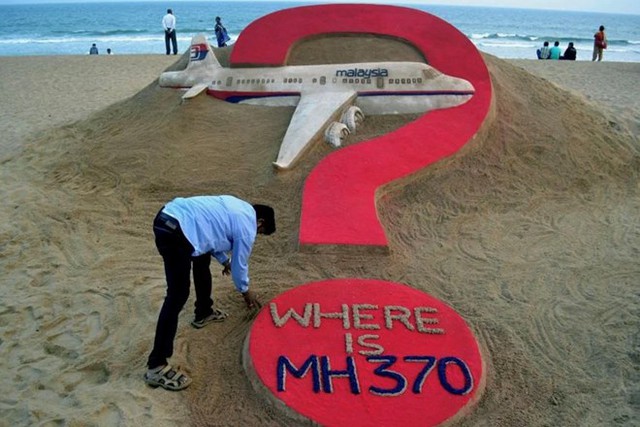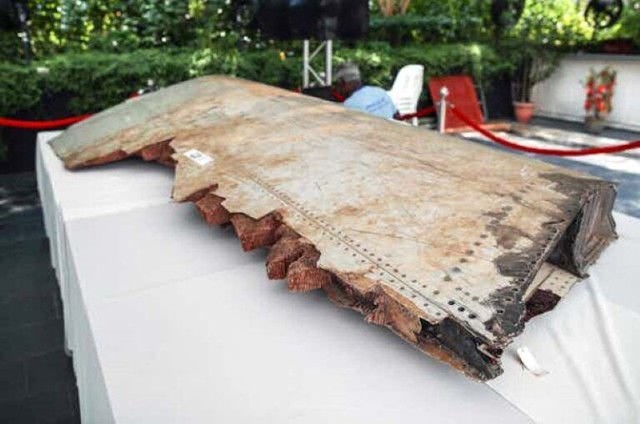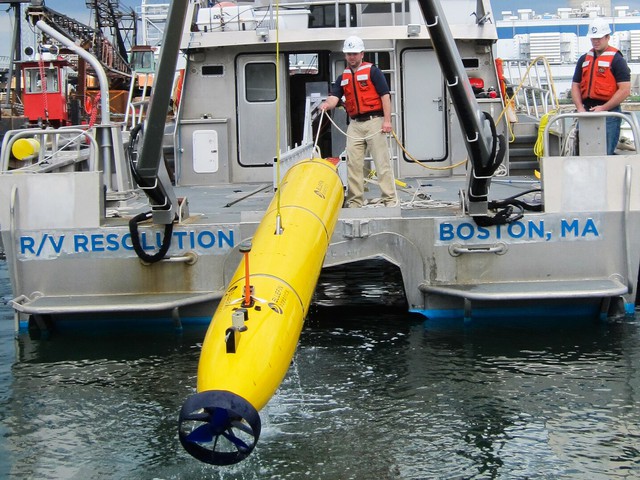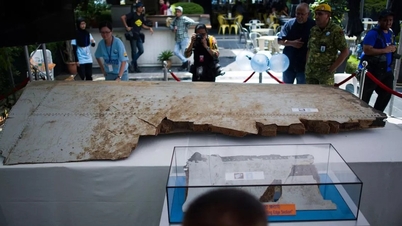Malaysia clarifies expectations on search for MH370
On March 16, Malaysian Prime Minister Anwar Ibrahim said that relatives of those missing on Malaysia Airlines flight MH370 should not expect any breakthrough in the search for the missing plane, Bernama reported.

A decision on the search for MH370 will be made in the coming weeks. Photo: AFP
During a visit to Germany, Malaysian Prime Minister Anwar Ibrahim revealed to German news agency DPA that Malaysia's decision on Ocean Infinity's proposal to search for MH370 could be made in the coming weeks. However, families should not get their hopes up.
"I don't want to give them false hope that we might have the answers. But I want to convince them that we are doing everything we can," the Malaysian leader stressed.
Malaysian Prime Minister Anwar Ibrahim also admitted that there were significant costs involved in the search for MH370.
He affirmed that the Malaysian government is committed to doing everything possible to find answers to one of the most mysterious plane disappearances in modern aviation history.
Previously, the Malaysian Transport Minister said that the search for MH370 could be carried out by Ocean Infinity - a US-based underwater search company.
The announcement of the possibility of reopening the search for MH370 was made just days before March 8, 2024 - the 10th anniversary of the disappearance of the Malaysia Airlines plane carrying 239 passengers and crew.
Malaysia Airlines Flight MH370 mysteriously disappeared while carrying 239 people, including 150 Chinese and 50 Malaysians, while flying from Kuala Lumpur, Malaysia to Beijing, China on March 8, 2014.
MH370: The most challenging search in history is launched again

Debris believed to be from MH370 on display in 2019. Photo: EPA
On March 8, 2014, Malaysia Airlines Flight 370 was flying from Kuala Lumpur, Malaysia, to Beijing when it deviated from its planned route, turning west over the Malay Peninsula.
The Boeing 777, carrying 239 people from 15 countries, is believed to have veered off course and flown southwest in the hours after losing radar contact. Some officials believe it may have crashed somewhere in the southern Indian Ocean after running out of fuel, but years of extensive search efforts have yielded no answers. No victims or wreckage have been found.
Why MH370 went off course and its exact location remains one of the greatest aviation mysteries of all time. Malaysian officials this week requested a new search operation.
The first phase of the search lasted 52 days and was conducted mainly from the air, covering 4.5 million square kilometers, involving 334 search flights. No wreckage was found.
Two subsequent underwater searches in the Indian Ocean also failed to find any evidence of the main crash site.
The first underwater search, led by Australia, covered 120,000 square kilometers and extended 50 nautical miles past the seventh arc. In January 2017, the governments of Australia, Malaysia and China officially called off the underwater search after scouring about 74,000 square meters of the Indian Ocean floor, in an effort that cost $150 million.

The Bluefin-21 autonomous diving device, similar to the one used to search for MH370 on the ocean floor. Photo: nationalgeographic
In January 2018, the Malaysian government began another underwater search in partnership with Ocean Infinity after pressure from families of the missing passengers and crew. After more than three months, the Ocean Infinity-led search effort ended without finding any evidence of the plane’s whereabouts.
Although the wreckage of the plane has never been found, about 20 pieces of debris suspected to be from the plane have been found scattered along the coast of mainland Africa and on the islands of Madagascar, Mauritius, Réunion and Rodrigues.
In the summer of 2015, investigators determined that a large object that washed ashore on the coast of Réunion, a French island in the Indian Ocean, was a flaperon from a Boeing 777, making it likely to be debris from MH370.
Another piece of debris, a triangular piece of fiberglass and aluminum composite with the words “No Step” written on the side, was found in February 2016 on an uninhabited sandbank along the coast of Mozambique.
Then, in September 2016, the Australian government confirmed that the wing fragment that washed up on a Tanzanian island was from flight MH370. The Australian Transport Safety Bureau matched its identification number to that of the missing Boeing 777.
There are countless theories, ranging from the bizarre to the provocative, about what caused the plane to disappear. The lack of information about what happened to the flight has led the public and investigators in many different directions.
Some officials believe the plane ran out of fuel, while others theorize that the pilots attempted an emergency landing at sea. Others suggest that one or both pilots lost control of the plane, that the pilot was a rogue pilot, or that the plane was hijacked.
After more than four years of searching and investigation, a 495-page report released in 2018 by Malaysian authorities failed to provide any conclusive answers about the plane’s fate. The lack of concrete answers has left the victims’ families devastated as they hope for some closure.
Kok Soo Chon, the head of the investigation team, said the available evidence – including the manual flight of the plane and the transponder being turned off – pointed to “unlawful interference”, which could indicate the plane was attacked. But there was no evidence to suggest who might have interfered or why.
Investigators also closely examined all passengers, pilot Zaharie Ahmad Shah and co-pilot Fariq Abdul Hamid. In the report, they looked at the financial status, health, voice over the radio and even the gait of the people involved as they went to work that day. No abnormalities were found.
Now, a full decade after the mysterious disappearance of MH370, a new search may soon be underway.
Malaysian officials said in a statement this week that the government was ready to discuss a new search operation after being approached by the company Ocean Infinity.
Oliver Plunkett, chief executive of Ocean Infinity, said in a statement that the company could now reopen the search for the plane, after efforts six years ago failed to yield answers.
"This search is arguably the most challenging and indeed the most relevant search to date," Mr Plunkett said. "We are working with a number of experts, some outside Ocean Infinity, to continue analysing the data in the hope of narrowing the search area down to an area where success is likely to be achieved."
Technology has improved greatly since the first underwater searches. Ocean Infinity is using a fleet of autonomous underwater vehicles with improved resolution. The proposed search will also use remotely operated surface vessels.
In the area where the search took place, the ocean is about 4,000 meters deep. The water temperature is 1–2°C, with low currents. This means that even after 10 years, the site may still be relatively intact. So there is a good chance that the wreckage can still be found.
If future searches are successful, this will bring closure not only to the families of those killed but also to the thousands who participated in the search effort.
Readers are invited to watch videos of interest on Family and Society.
'Spiderman' climbs wall to throw documents to candidates
Source



![[Photo] Highways passing through Dong Nai](https://vphoto.vietnam.vn/thumb/1200x675/vietnam/resource/IMAGE/2025/11/12/1762940149627_ndo_br_1-resize-5756-jpg.webp)




































































































![Dong Nai OCOP transition: [Article 3] Linking tourism with OCOP product consumption](https://vphoto.vietnam.vn/thumb/402x226/vietnam/resource/IMAGE/2025/11/10/1762739199309_1324-2740-7_n-162543_981.jpeg)







Comment (0)